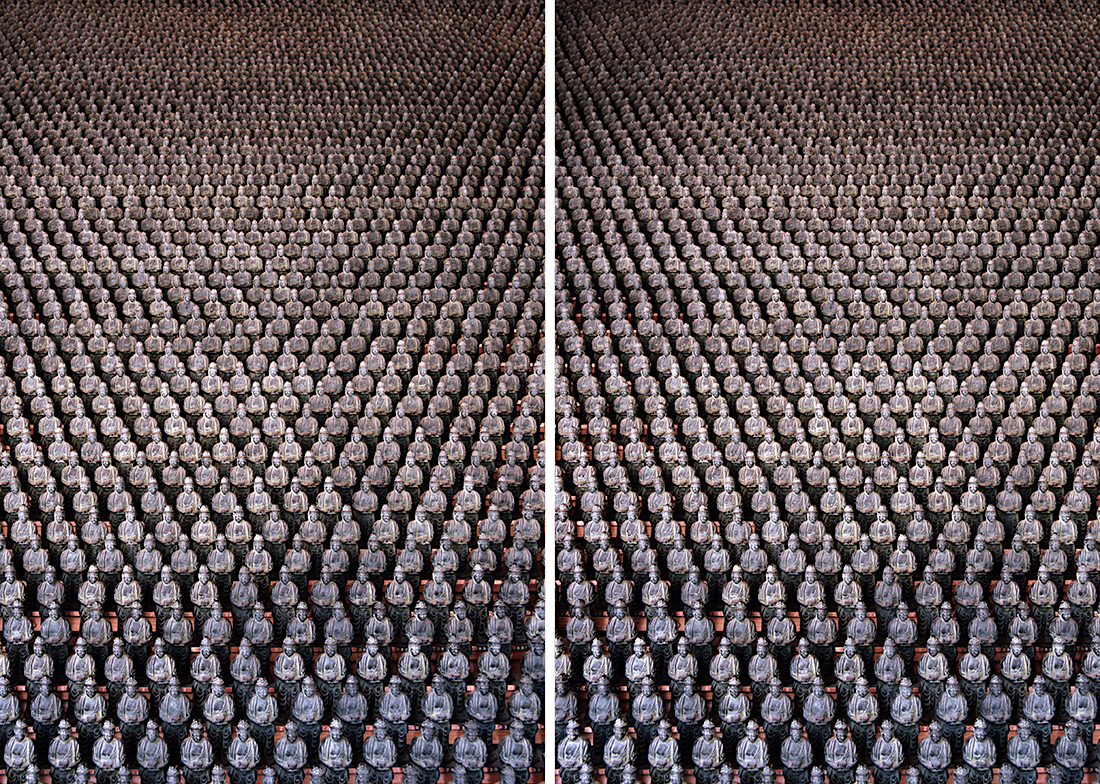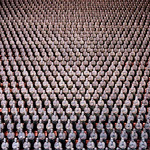Krystyna Ziach

Diptych, lambda-prints, 180 x 240 cm, 120 x 160 cm, edition 5 each
Infinity 2002-2003
The Symbolic Imagery of Krystyna Ziach, text by Florent Bex, from the book Infinity & Archê / Krystyna Ziach, 2006, published by Thieme Art, NL
Florent Bex, honorary director of the Museum of Contemporary Art MuHKA, Antwerp, BE
The Symbolic Imagery of Krystyna Ziach
In our current consumer society images are omnipresent, but they are trifled with. Their communication value is reduced to primary messages. The images are mostly used to manipulate consumer behaviour, or to give us the illusion that all sorts of meanings are hiding behind the visually ephemeral image. This book not only offers an engaging selection of Krystyna Ziach’s photographic body of work, but also leads us into a world of symbolic imagery. Images that are to a large extent timeless and universal, because they result from the human imagination looking for sense and meaning in the phenomena of the world and the universe. A symbol is always twofold, because it consists of an intelligible and recognizable aspect and an underlying invisible dimension. The unknown, which lies hidden behind the known, may only be approached intuitively and will never clearly and completely relinquish itself. A symbol remains effective as long as it is laden with hidden meanings, as long as it remains suggestive, the symbol playing a mediating role between matter and mind, between nature and culture. The magic of symbolic images lies in the fact that they tell more than they show and especially in that they link up concepts that are often bipolar, such as heaven-earth, space-time, real-unreal, immanent-transcendent. The symbol moves away what is near and brings closer what is distant. In the photo series Infinity Krystyna Ziach shows us that the symbol functions in the first place for the individual, or for a specific collective which identifies with it. Thus the symbol has a unifying and social function. The Shinto temples, the Secret Rooms, with their surreal play of light and darkness, the nature created with astounding care by humans in the Imperial Gardens, they illustrate fundamental aspects of Japanese culture. A culture with an eye for order and harmony, always in an intimate relationship with nature that refers to the bond between heaven and earth, to the permanent interaction between the divine and the human. There is the sense of repetition in the infinite sequence of gates, or in the accumulation of thousands of Buddha statuettes which tell us that there is a potential Buddha hiding in each of us. /.../ Krystyna Ziach offers us images which again and again evade rational explanation. They neither give unambiguous, nor conclusive answers, but ask to be continually reinterpreted. These are images of all times, which create an unavoidable interaction between the universal and the individual by appealing to our personal imagination. Images which refer to the inscrutable and the inexplicable, to suppressed desires, to man who, in his daily emotional experience of the world, is eternally in search of the existential meaning of life. Images which seem to offer themselves in a mediating role between mind and matter, nature and culture, the conscious and the subconscious, between dream and reality. Simultaneously recognizable and alienating, they remind us of ephemeral brevity and inescapable transience. But, in the tranquil vulnerability and the melancholically poetic, the wonderment remains unassailably active./..../
Translation: Hanny Keulers
Read more on : Documents & Press
Contact
Krystyna Ziach
Amsterdam
Nederland
E-mail: krystynaziach@gmail.com
www.krystynaziach.com
32 dagen geleden bijgewerkt

